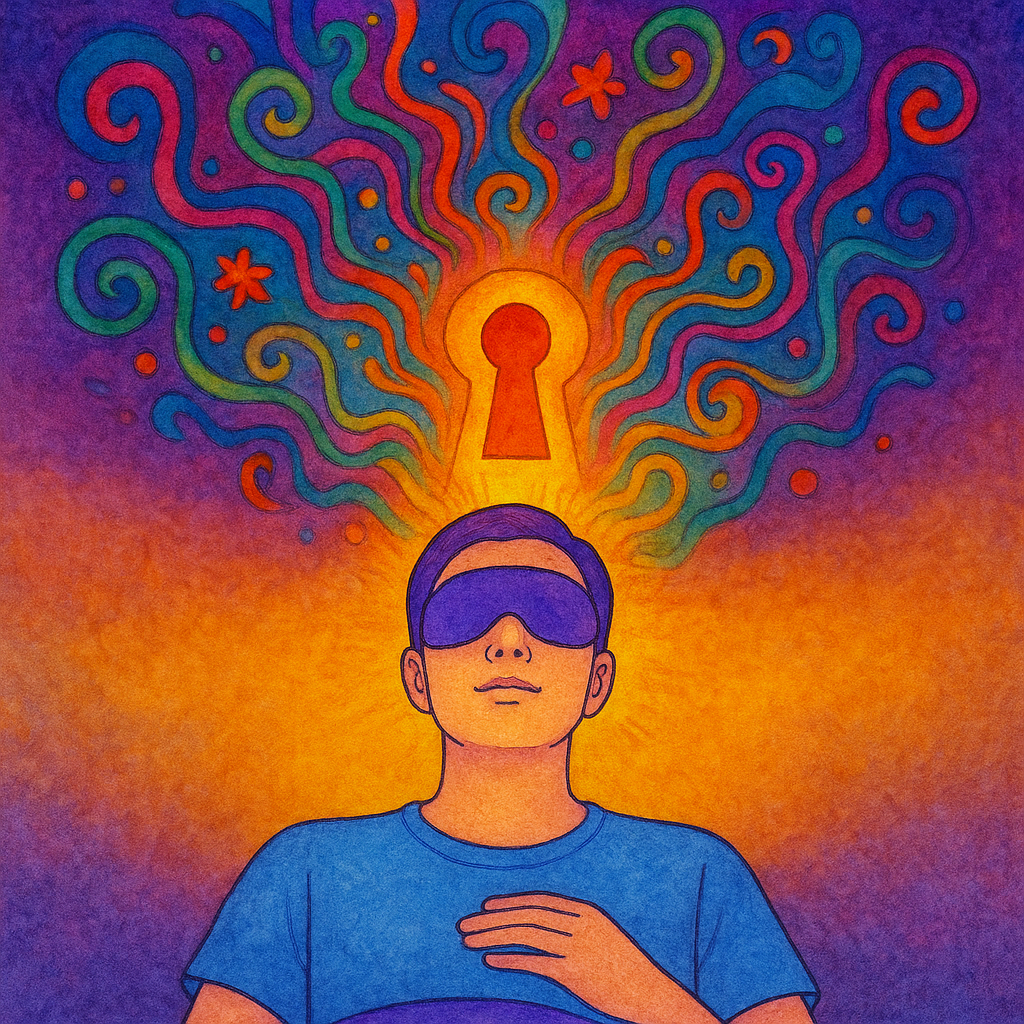Feeling Stuck? How Ketamine Therapy Helps the Brain Break Free
Feeling Stuck? How Ketamine Therapy Helps the Brain Break Free
One of the most common concerns people bring to therapy is a sense of feeling stuck. Whether it’s in a relationship, a career, or simply within our own minds, we all encounter moments where change feels impossible.
When someone comes to therapy feeling stuck, by definition, they’re struggling to do something different. From a neurological perspective, chronic depression, anxiety, and unresolved trauma can make it difficult for the brain to form new neural pathways, the connections that allow us to think, feel, and respond differently.
How Healing Actually Happens
As a clinician, I believe healing comes through what we call a corrective experience. Neuroscientists call this memory reprocessing but it’s the same idea.
Whether it’s depression, unresolved trauma, or relational patterns we get unstuck by learning new ways to relate to our surroundings, our loved ones, and ourselves. The process of relearning and discovering new ways to connect, respond, and feel is how true and lasting change takes place. Now, I just told you that unresolved trauma, chronic stress and depression can make learning and change incredibly difficult. One of the tools we offer, when it’s clinically appropriate, is ketamine-assisted psychotherapy (KAP), a modern, evidence-based approach that can help the brain and mind open back up to change.
What Is Ketamine-Assisted Psychotherapy?
Ketamine has been safely used for decades as an anesthetic and pain reliever. More recently, research has shown that ketamine also has profound effects on the brain. It can increase the formation of new connections between neurons (known as synaptogenesis) and enhance the brain’s ability to change and adapt, aka neuroplasticity.
In simpler terms, ketamine therapy helps your brain re-learn, heal, and regain emotional flexibility… the very capacities that depression and trauma often shut down
For people with treatment-resistant depression, Complex PTSD, or suicidal thoughts, ketamine has shown remarkable effectiveness. Clinical studies have found that symptoms of suicidality can reduce within hours of administration and remain improved. It is noted, that when you use ketamine as a one-off there tends to be a relapse for symptoms, which is why continued therapy is important. The use of ketamine-assisted psychotherapy is further supported by clinical research showing that coupling therapy with ketamine can enhance long-term recovery from depression, anxiety, and trauma-related symptoms.
When used intentionally and in a therapeutic setting, ketamine-assisted psychotherapy can help people break patterns and unlike an SSRI (or any antidepressant) you don’t have to take it for the rest of your life.
How Ketamine-Assisted Psychotherapy Works (basically)
Ketamine Assisted Psychotherapy unfolds through a series of carefully structured and supported sessions designed to help you prepare, experience, and integrate the work meaningfully:
Medical Consultation
We partner with Journey Clinical, our medical team and prescriber for ketamine therapy. Before we begin, you’ll meet with a psychiatrist who will review your medical history and ensure that Ketamine-Assisted Psychotherapy is the right fit for you. Journey Clinical is in-network with many insurance companies, and the medical consultation is typically covered. The cost of the ketamine medication itself is out-of-pocket for all clients. A breakdown of their costs can be found here.Preparation
Once the medical staff ensures eligibility we will begin with one or more preparatory sessions to explore your history, your intentions, and what you hope to gain from the experience. These sessions are about building trust, safety, and clarity.Ketamine Dosing Session
Your ketamine prescription will be mailed to your home prior to the session. You’ll self-administer the medication in person at our office under guidance. The ketamine experience takes place in a calm, supportive environment where you remain conscious, but in an altered state of awareness. This is when neuroplasticity occurs, allowing the brain to form new pathways and access insights, both consciously and subconsciously. Each dosing session typically lasts 2 hours..Integration
After each Ketamine Assisted Psychotherapy session, we meet again to process what arose. Together, we make sense of your experiences and translate them into meaningful changes in your daily life. Integration is where much of the healing takes root.
Why Ketamine-Assisted Psychotherapy Matters
Feeling stuck doesn’t mean you’re broken, it often means your brain and body are protecting you in the only way they know how. Ketamine-assisted psychotherapy offers a way to gently interrupt those protective patterns, giving you space to reconnect with your inner resilience and curiosity. When combined with psychotherapy, ketamine becomes more than just a medical treatment, it becomes a transformative healing process that helps you rediscover your capacity for growth, connection, and emotional freedom.
For clients in New York City seeking psychedelic-assisted psychotherapy, ketamine therapy for depression, or treatment-resistant depression treatment, this approach can help unlock new pathways toward healing.
Is Ketamine-Assisted Psychotherapy Right for You?
KAP isn’t for everyone and that’s okay. It’s best suited for individuals who have already engaged in therapy and are looking for a deeper way to move through long-standing emotional or psychological barriers.
If you’ve been feeling stuck or exhausted by the same cycles of depression, anxiety or trauma, ketamine-assisted psychotherapy in New York City may offer a new path forward. Together, we can explore whether this approach is right for you and how it might fit into your larger healing journey.
Take the Next Step Toward Healing
If you’re curious about Ketamine Assisted Psychotherapy, I invite you to reach out for a consultation. Sometimes, the first step toward getting unstuck is simply allowing yourself to imagine that change is possible.
-Written by Matt Nitzberg


